The Szentendre suburban railway originally ran only as far as Filatorigát, the trains left for Szentendre from there. The existence of the railway was because, in the 1880s, the regulations allowed railway lines to be built more cheaply on routes with less traffic, i.e., with a different infrastructure, which could only handle lighter trains. As a result of this regulation, Hungary was flooded with suburban railways, which, as their name indicated, did not participate in national transport, but delivered local goods - and passengers - to the larger centres.
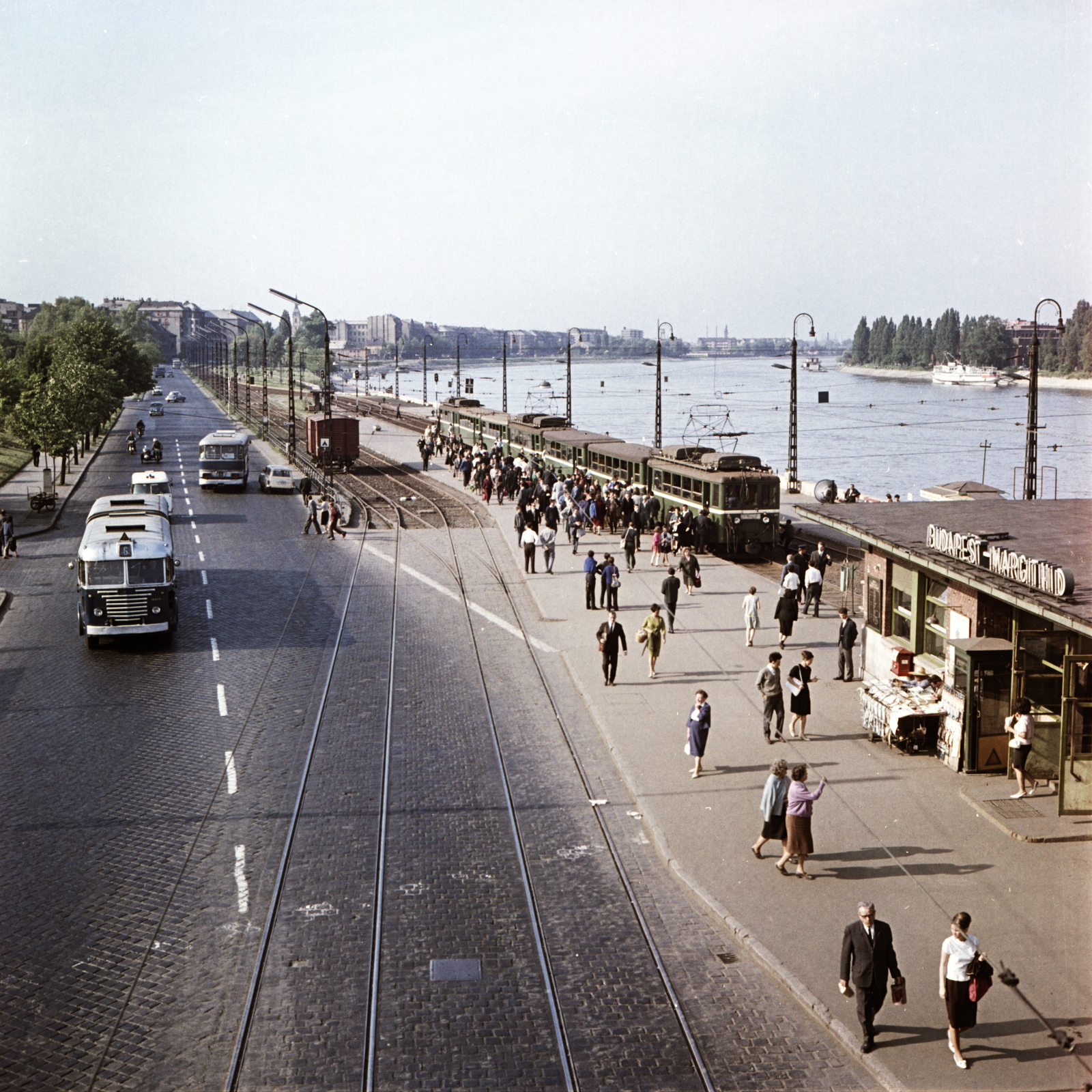
The terminus of the suburban railway line at the Margit Bridge in 1966 (Photo: Fortepan/Főmterv)
The Szentendre line was also built in 1888 as a suburban railway. However, when a few years later, in 1892, the Buda, i.e., the right-side bank circular railway, was opened to primarily serve the plants in North Buda and Óbuda, the Szentendre suburban railway was also connected to this network, and the trains ran to today's Bem, then known as Pálffy Square, and until 1937 it was the terminus of this suburban railway. However, this was changed at the same time as the Margit Bridge was rebuilt, and in 1937 the terminus of the suburban railway was moved to the north of the Margit Bridge. This functioned for barely 35 years, because in 1972, in connection with the metro investment, it was extended again southwards, up to Batthyány Square, i.e. the planned metro line.
However, there was an important difference: between 1892 and 1937, the trains - which were pulled by steam locomotives until 1914 - ran on the surface, but during the extension between 1970 and 1972, the line was pushed underground from the Császár Bath.
The investment was clearly related to the construction of the subway and was carried out in the framework of that work. An underpass system was originally built on Batthyány Square so that people could get down to the metro station from there, and the new suburban railway main station was built on the underpass level.
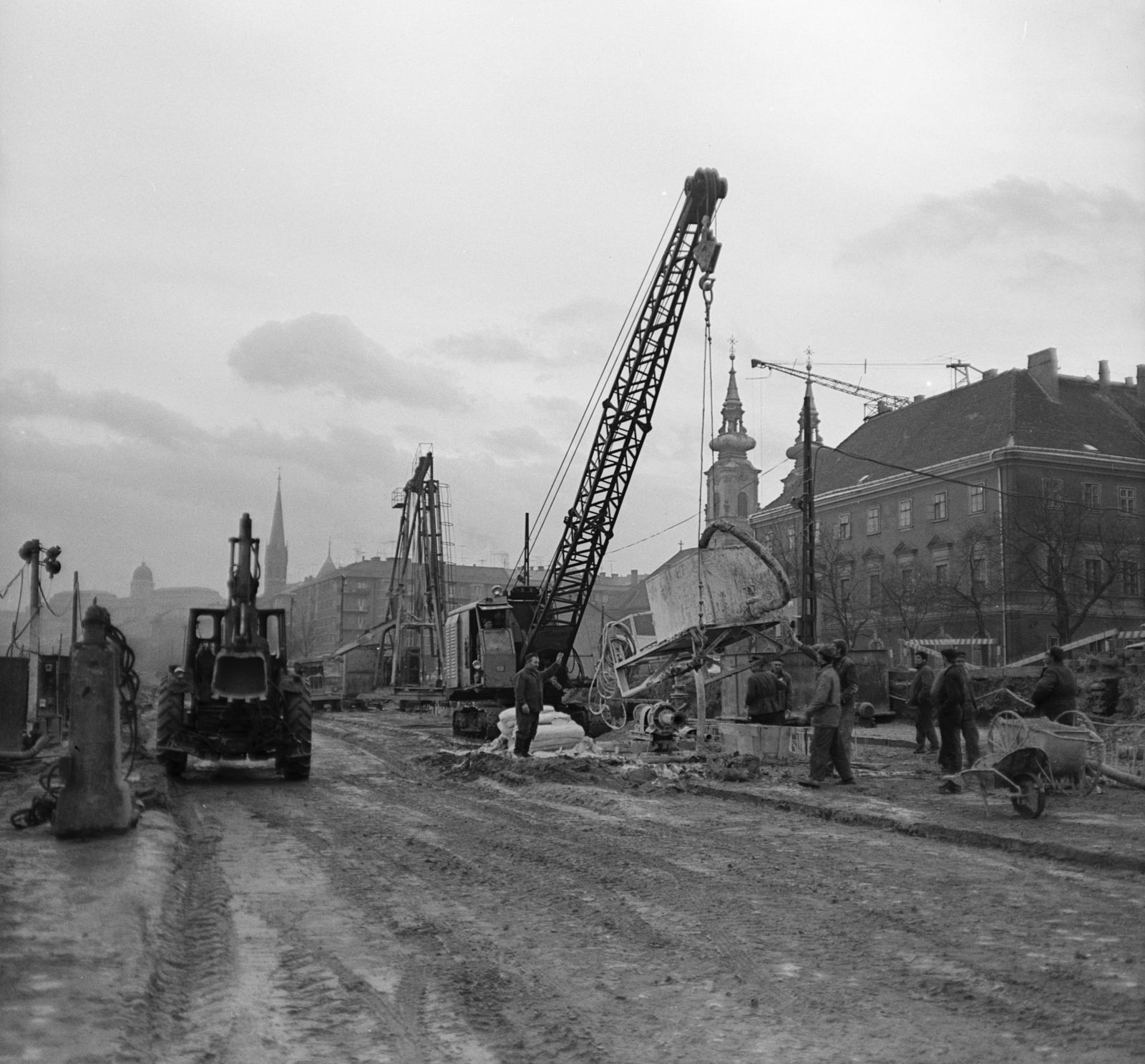
Slurry wall construction in front of Batthyány Square in 1970 (Photo: Fortepan/Főmterv)
According to the original ideas, the work, i.e. the track descending from the Császár Bath and the tunnel, should have been completed in 1973. However, the Transport Construction Company was forced to mechanise on a large scale, as it had few people, especially only a few carpenters working at the company. Thanks to this, it was built with a slurry wall construction method, which was considered new at the time. This means that the entire pit is not dug in the first round, but only the narrow strip where the wall of the pit will be, and the wall is built in this trench. The soil left inside holds the structure. When the concrete of the wall has set between the two walls of the future pit, they dig out the soil.
This method enabled mechanised and fast work. The suburban railway tunnel in Szentendre does not run deep, but directly below the surface, so the tunnel was not drilled but excavated from above to Batthyány Square. On 28 July 1972, construction manager László Drávucz told the Magyar Nemzet about the completion:
"It seems likely that we will be able to hand over the new facilities, if not by 22 December 1972, but much sooner than planned. We are doing our best to complete the work as soon as possible: we have mechanised the construction as best as possible, but we can no longer increase the speed in this way."
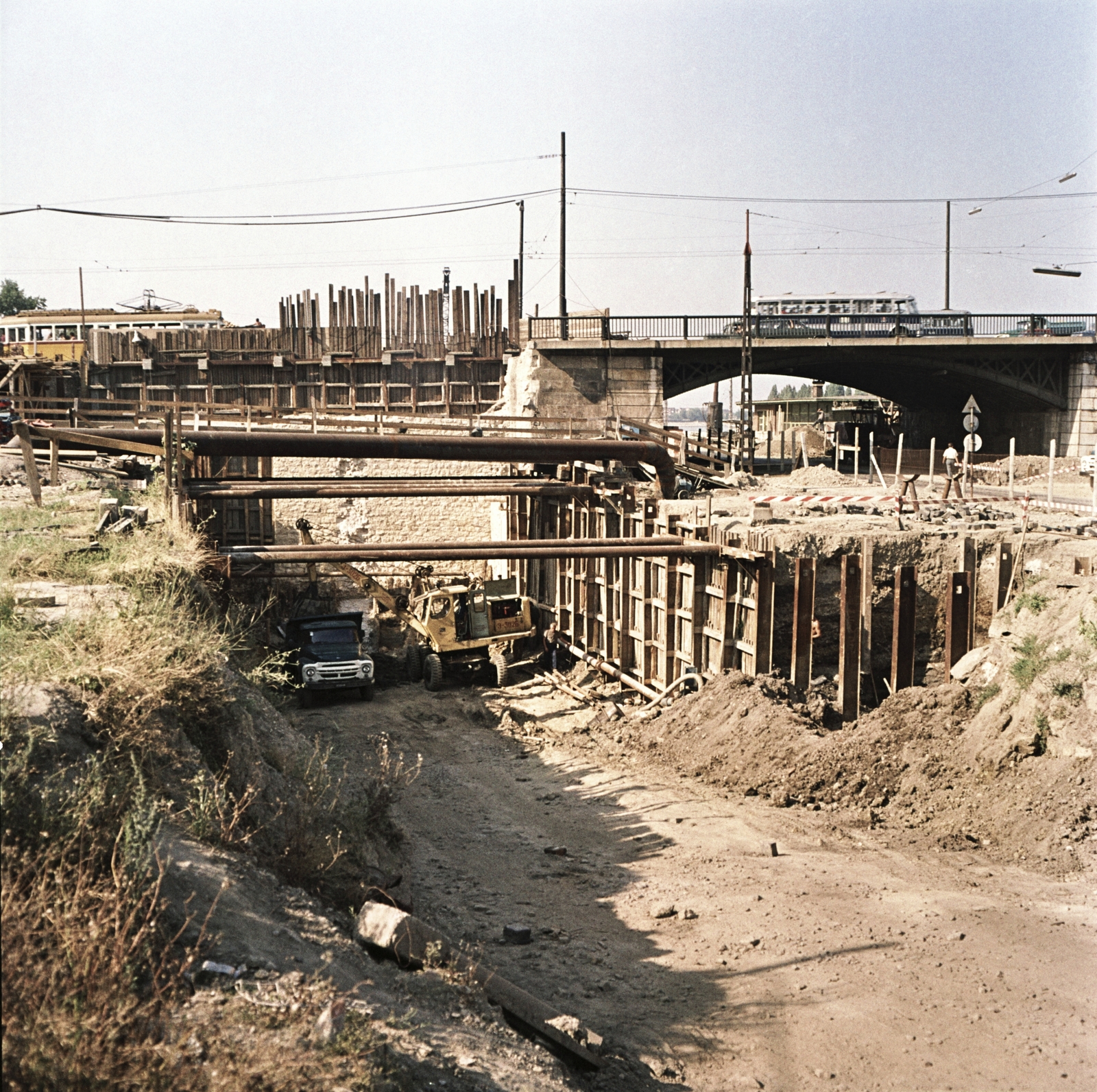
Construction at Margit Bridge in 1971 (Photo: Fortepan/Főmterv)
However, the work progressed well, which was helped by the low water level of the Danube and the drought of 1972, which meant that the work area did not have to deal with the ingress of water, as would have been expected in the case of a normal groundwater level. The concrete walls, the tunnel and the station at the Margit Bridge were already structurally ready by July 1972, and they were also in a good stage with the 4,600-square-metre Batthyány Square station, and this section of the suburban railway was completed at the same time as the subway. At the end of the year, a week before the handover, on 14 December 1972, the contemporary newspaper wrote about the expected changes:
"From the Buda bridgehead of the Margit Bridge along the Danube Bank, the Szentendre suburban railway extended to Batthyány Square was also hidden underground. An underpass system was built under the bridge to connect the suburban railway and trams, as well as buses 6, 106, 26, 60, 86 and 186. Stairs lead from the underpass to the bus stops and the Margit Bridge sidewalk. Through the direct transfer connections of the Szentendre suburban railway and the metro, it is possible to reach the Népstadion in 35 minutes from the soon-to-be-built new city quarter in Békásmegyer."
Since it was handed over at the same time as the metro, the press only wrote incidentally about the fact that this construction was also completed in the shadow of the large investment. Two of the suburban railways were therefore somewhat connected to the metro since metro line 2 met the Gödöllő suburban railway at Örs Vezér Square.
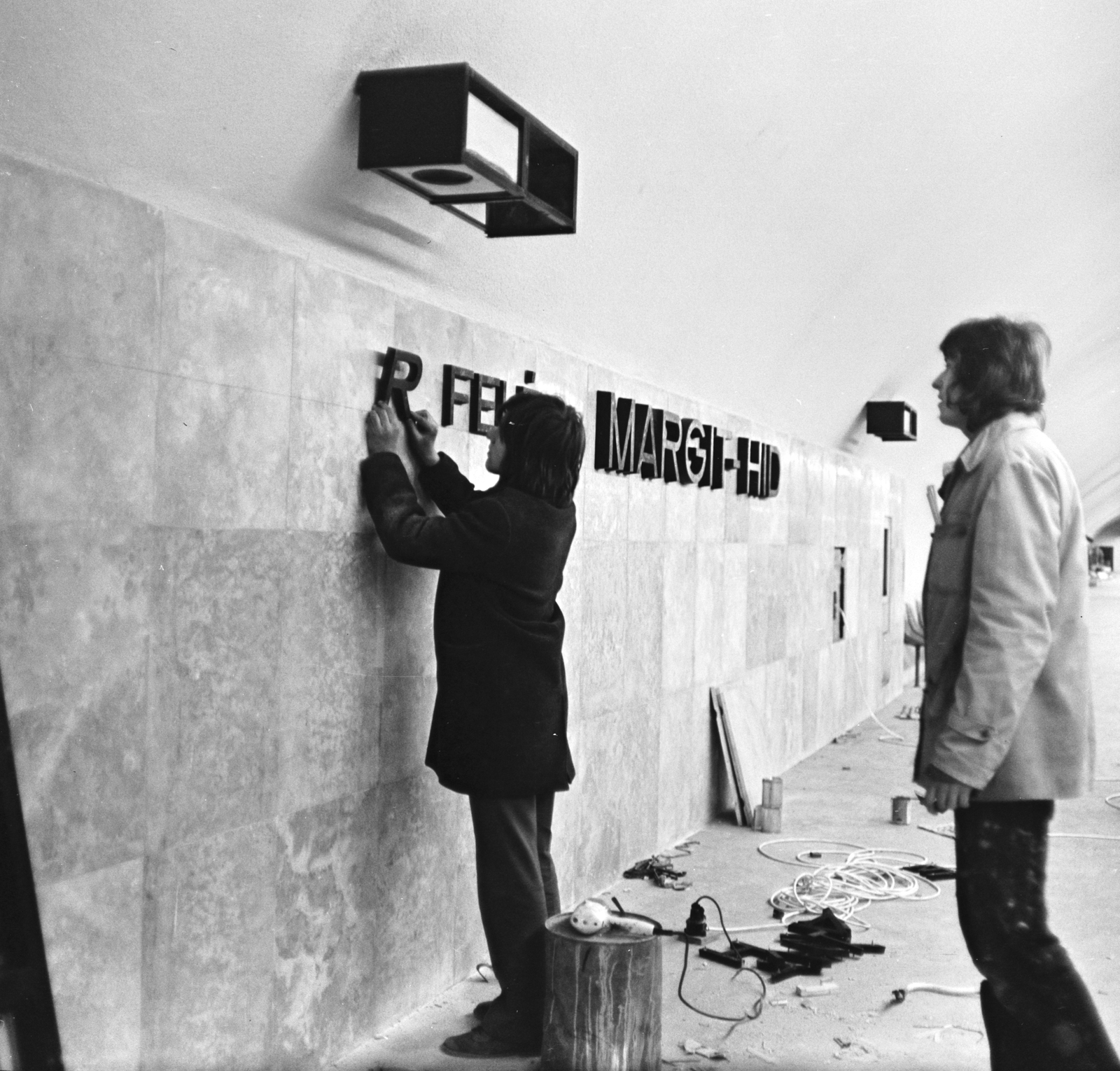
Final touches at the Margit Bridge stop (Photo: Fortepan/Főmterv)
The further development of suburban railways was envisioned at the time as taking several sections of the Szentendre line underground, for example, this was also planned for Óbuda.
And in recent years, there was also an idea to connect the Szentendre and the southern suburban railway lines underground (they originally intended – and still planning – to introduce the connected Csepel and Ráckeve suburban railway lines to Kálvin Square, the Kálvin Square underpass was originally built with this idea in mind), so that this would be metro number 5. Once this is realised, the southern terminus of the Szentendre suburban railway, designated 50 years ago, will change again.
Cover photo: The final works at the Batthyány Square station (Photo: Fortepan/Főmterv)

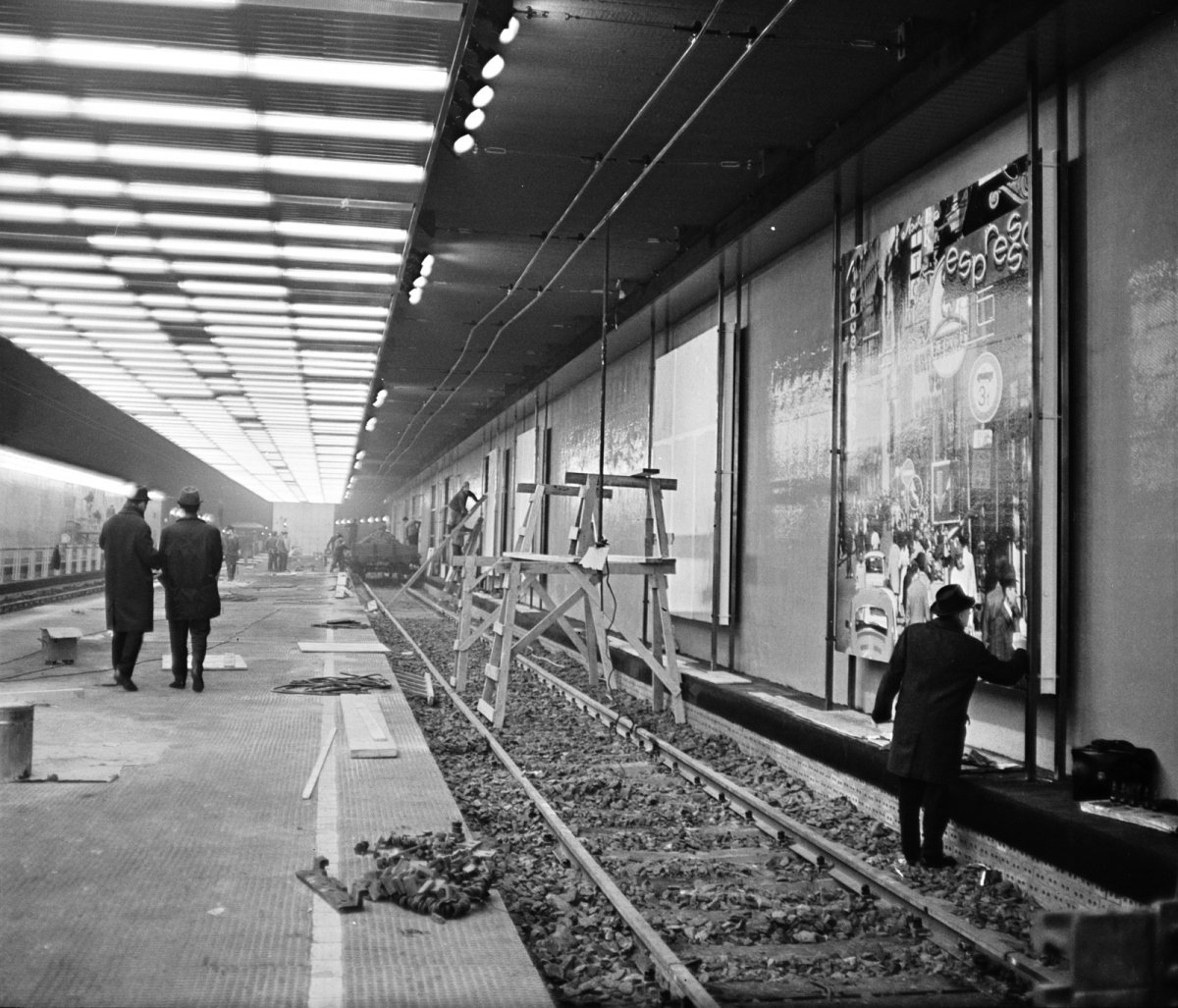


































Hozzászólások
Log in or register to comment!
Login Registration